We couldn’t visit Queensland in Australia without touring the Great Barrier Reef. Not only is it a UNESCO World Heritage site, but unfortunately, it’s also endangered.
As I knew this might be a one-in-a-lifetime activity, I spent hours researching companies to try and guess which one would give us the best Great Barrier Reef Tour, also taking into account all the different activities such as scuba diving, swimming with marine life, and the best dive sites. Below, I’d like to share some of the Great Barrier Reef tours I researched, the tour we took, and our experience with it.
I booked this tour through GetYourGuide. I often use GetYourGuide to book tours and other activities, and things always go smoothly with them. I love how they often offer free cancelation up until 24 hours beforehand and also share the name of the local tour operator.
Contents
- All you need to know about finding the best Barrier Reef tours
- Great Barrier Reef facts
- How to tour the Great Barrier Reef
- What to bring to the Great Barrier Reef
- Marine Life at the Great Barrier Reef
- Great Barrier Reef snorkeling dangers?
- What to do when you get seasick
- The best time to visit the Great Barrier Reef?
- From where to go on a Great Barrier Reef cruise?
- How to plan your Great Barrier Reef trip
- My personal Great Barrier Reef experience review
- Planning your trip to the Great Barrier Reef
- Don’t forget travel insurance
All you need to know about finding the best Barrier Reef tours
Great Barrier Reef facts
More than 1400 miles / 2300 km of jaw-dropping, living coral. Hundreds of tropical islands with glittering turquoise shores and white crescents of sand. Over 6,600 species of flora and fauna. Dozens of species of marine life. The Australian Great Barrier Reef is a landmark so vast that it can be seen from outer space.
Is there any doubt why the Great Barrier Reef is one of the world’s seven natural wonders?
It sits at the top of many people’s bucket lists for good reason. UNESCO World Heritage-listed, the Great Barrier Reef is the largest reef system on the planet. Parts of the reef could be up to half a million years old!
There are over 3000 individual reefs in total and 900 tropical Great Barrier Reef islands, including the breathtaking Lizard Island, idyllic Lady Elliot Island, and tropical Heron Island. It’s made up entirely of living organisms and supports an extraordinary diversity of marine life, from fish, mollusks, and whales to birds, turtles, and reef corals.
The Great Barrier Reef is found in the Coral Sea off the north-eastern coast of Australia. It stretches along the Queensland coast, from Bundaberg in the south up beyond the northern tip of Australia to near the south coast of Papua New Guinea.
It protects the coastline from stormy sea conditions, waves, and floods. This natural wonder has created a unique natural sanctuary for endangered marine life like the dugong and the green sea turtle.
But what is coral? Coral reefs are built by billions of tiny animals called coral polyps. They’re actually a distant relative of the jellyfish! They very gradually form a reef structure by leaving behind small limestone skeletons on which new coral polyps grow.
This then builds up over time. So coral reefs are basically layers and layers of these little skeletons, with a thin sheet of living coral polyps on the top.
These reefs are often nicknamed the ‘rainforests of the sea’ because they support at least a quarter of all marine life. This vibrant underwater jungle of activity is why the Great Barrier Reef is a natural wonder and one of the most popular sites on the planet for scuba diving, snorkeling, and other marine activities.
Tragically, this incredible ecosystem has an uncertain future. Since 1985, the Great Barrier Reef has lost over half of its coral cover for multiple reasons. Recent official reports say the Great Barrier Reef outlook has become ‘very poor.’ The rise in sea temperatures due to climate change has led to something called ‘coral bleaching.’
Bleaching happens when the coral loses the life-giving colorful algae that inhabit and feed it. With our constant polluting activities, coral isn’t given a chance to recover. Without the algae to feed on, vast stretches of coral are dying out.
Other destructive factors are pollution, poor water quality, chemical runoff, oil spills, and overfishing that disrupts food chains. It’s not just man-made pollution that the coral reefs are up against. Natural factors can devastate the Great Barrier Reef, like outbreaks of coral-eating crown of thorns, starfish, and tropical cyclones.
Although many think it may be too late, large areas are now protected from overfishing and pollution. Efforts are being made to make Great Barrier Reef tourism as eco-friendly as possible, and there is still so much to see.
How to tour the Great Barrier Reef
The Great Barrier Reef is so massive that traveling there and deciding on how to visit can seem a little daunting. There are so many separate companies that operate Great Barrier Reef tours of different lengths and activities.
Should I do a day tour or an overnight Great Barrier Reef Tour? Go Great Barrier Reef snorkeling or scuba diving? Which islands should I visit? Do I stick to the water or take a helicopter ride? And will I miss out if I’m not a certified diver?
This may well be the only opportunity in your life to explore this marine temple, so it’s worth planning ahead. You don’t want to waste time picking the Great Barrier Reef tour and choosing the day! Remember that whatever you decide, you will have the experience of a lifetime.
Read on for some of the best ways to experience the natural wonder that is the Great Barrier Reef.
Snorkeling and diving day trips to the Great Barrier Reef
It’s well-known that the Great Barrier Reef is one of the world’s top dive sites. To get up close and personal with the coral reefs, the Great Barrier Reef scuba diving, and snorkeling are probably the most rewarding ways of experiencing this natural wonder in all its glory.
An outer Great Barrier Reef tour often happens on smaller boats with fewer people. You’re dropped off and allowed to scuba dive and explore to your heart’s content.
Day trips run from most departure points (more on them later) and generally leave between 7.30 am and 8.30 am and return by 5.30 pm at the latest. Numerous outer Barrier Reef tour companies run snorkeling and diving day trips, such as Tusa, Reef Experience, Quicksilver, Pro Dive Cairns, and Silverswift.
Great Barrier Reef snorkeling and diving tours are often all-inclusive, and the fee is typically between 150 and 240 AUD (about 92 / 100 and 147 / 160 EUR / USD). You can generally get a discount if you have your own scuba diving equipment.
Tours usually include breakfast, lunch, snacks, trips to two or three dive sites, and more, depending on the company.
If you’ve never gone scuba diving before, don’t worry! There are introductory dives available for complete beginners – you just need to pass their health checks (a simple questionnaire), and then you’re away. Tuition happens on the boat. Then you’ll go scuba diving with an instructor and no more than three others.
Usually, you still get the chance to do a second scuba dive in the Great Barrier Reef in the afternoon, where you can put your newfound skills into practice.
Snorkeling is another great option if you don’t fancy scuba diving in the Great Barrier Reef (or, for some reason, can’t try it). All equipment is provided, and sessions last between 30 minutes and over an hour, depending on your experience. Most scuba diving companies also offer Great Barrier Reef snorkeling tours or incorporate snorkeling as an option on scuba diving tours.
When searching for the best Great Barrier Reed tours, choose a company with several different dive permits. This means they are certified at multiple sites, so they can choose the best places on the day depending on conditions and move to a different reef if one is particularly busy.
Make sure you book in advance, as then your name will definitely be listed on their register – this means they’ll check that you’re back on the boat before heading off to the next dive spot!
There are also health implications to scuba diving and flying on the same day, so bear that in mind when you’re traveling to the area. You won’t be able to scuba dive in the Great Barrier Reef if you’re going to be flying above a certain altitude within 24 hours. It’s also a good idea to check that your travel insurance covers scuba diving.
A scuba dive camera is a great thing to bring along, but if you don’t have one, you can normally rent one from the tour company. This will normally cost around 60 AUD (approximately 40 USD).
A final bit of advice – look, don’t touch! These are real, living creatures and deserve our respect. Just touching a coral can kill it, and it needs all the help it can get.
Great Barrier Reef pontoon tours
Pontoons are large, often multistory floating platforms permanently tethered to prime locations on the outer reef. They are a good choice if you don’t fancy being confined to a small boat and want to have a go at a multitude of activities. They’re also ideal for people who are less confident at swimming.
A day at a pontoon begins with the boat journey from the shore, which could be up to an hour and a half in length. Once at the pontoon, you’ll have about five hours to pick and choose from all the activities on offer.
You can still scuba dive and snorkel from a pontoon – there are built-in scuba stations with all the equipment provided. Like the boat trips, introductory scuba diving sessions are available too, if you’re not already certified. Pontoons have snorkel platforms with steps down so you can enter the water easily, and sheltered lagoons with lifeguard supervision and rest stations if you need a breather.
The larger pontoons also offer underwater observatories with large glass windows where you can watch the marine life beneath the surface. Perfect for those who don’t want to get wet! Because the structure is permanent, many sea creatures inhabit the anchor points of the pontoon itself, so there is plenty to see. There are often marine biology talks and presentations in these viewing areas.
Pontoons are a mix of all activities – from these floating platforms, you can often take short ten-minute helicopter trips up over the reef or go out on Great Barrier Reef glass bottom tours. Some offer semi-submarine tours that make 40-minute trips out from the pontoon throughout the day. There are even guided snorkel safaris with marine experts.
In between activities, you can relax in the tropical sunshine on the upper floor sundeck, grab a drink at the onboard bar, enjoy a buffet lunch and afternoon tea, and make use of the showers and changing room facilities.
A pontoon Great Barrier Reef boat tour tends to vary in price depending on how far offshore they are sited. As a general rule, the further out the pontoon, the healthier and more pristine the reef, and the more there is to see. Prices range between 199 and 250 AUD (134 – 168 USD), and some of the most popular pontoon trips are organized by companies such as Quicksilver, Reef Magic, Sunlover, and Great Adventures.
Ultimate Great Barrier Reef Cruise with Marine World Pontoon
This full-day excursion is a good choice if you want to do a pontoon reef trip. After a smooth catamaran ride, you’ll arrive at the all-weather Marine World pontoon, where you can go snorkeling independently or with a marine biologist, try SNUBA, try a helmet drive, or stay dry and view the reef from the semi-submersible reef viewer, glass bottom boat or underwater observatory. Snacks, refreshments, and lunch are included.
View this tour
On a liveaboard
If one day just isn’t enough, there’s the option of spending a magical night on the reef itself, on what is called a liveaboard. Going to sleep after watching the sun set over the Great Barrier Reef is one of life’s most awe-inspiring sights, beaten only by one thing… waking up to the sunrise over the Great Barrier Reef!
Often considered the ultimate Great Barrier Reef experience, liveaboard trips usually range from one to three nights out on the reef, where you live, eat, scuba, snorkel, and sleep at sea. It’s a more pricey option, but one that allows you to explore this natural wonder in much more depth.
You’ll often take a boat tour out, dive at one reef site, and then board the overnight ship. This means the bigger vessels can stay in the outer reefs. You can go scuba diving and snorkel from these liveaboard ships and do an introductory diving session just like on the day boat trips and the pontoons.
Having the opportunity to spend even one night out on the reef gives you multiple scuba diving sessions, which means you get much more of a chance to witness the full wonder of the Great Barrier Reef.
You can have more focused dives on different elements of the reef. One of the dive sites might be focused on fish, another on the coral itself, and another perhaps on turtles. If you’re traveling alone, you can be paired up with a buddy diver or a guide.
After all that scuba diving and swimming, you will be exhausted and very hungry! Luckily, the crew takes complete care of you during your stay on board the vessel, and all meals are provided, freshly prepared.
Cabins are usually twin or double rooms and air-conditioned with en suite bathrooms. There is a bar available too – but it’s a good idea to get as much sleep as possible to be fresh and ready for the reef in the morning.
A night scuba dive is one of the most exciting experiences you get on a liveaboard. All the thrills of a regular dive, but with the added adrenaline rush of not knowing what is about to pass by your face!
Swimming in the dark ocean at night, being gently swayed by the current, is a feeling you won’t forget in a hurry. You will likely encounter night predators like gray reef sharks, the reflective eyes of crabs and crustaceans, sleeping turtles huddled in crevices, and nocturnal creatures coming out to play.
Even though night dives are accompanied by experienced guides, this might not be your cup of tea. If you don’t fancy getting all the way into the water, there are opportunities to see sharks and other marine life from platforms that are lowered shallowly into the water. The perfect place to witness how life changes on the reef at night for those that aren’t quite as daring!
Snorkeling is an option on these liveaboard boats if you’re not into scuba diving. In fact, many people go just to snorkel.
Companies that run recommended liveaboard experiences include Divers Den, Spirit of Freedom, and Mike Ball Dive Expeditions. These Great Barrier Reef tours vary in length and price but are roughly between 560 AUD (377 USD) for a one-night trip and 1100 AUD (740 USD) for a three-night stay.
Recommended overnight tour: the Great Barrier Reef overnight snorkel and dive trip
With this boat tour, you can spend one or two nights on the Great Barrier Reef. You’ll get to go on three to five snorkel or dive sessions each day, watch the sunrise from the water, and enjoy the delicious included meals on board. There’s plenty of time to relax as well.
View this tour
From a glass-bottom boat or a semi-submersible
Don’t fancy getting in the water but still want to experience the underwater world of the Great Barrier Reef? A glass-bottom boat tour or semi-submersible cruise could be the ideal solution for you.
Most tour operators (such as Sunlover and Great Adventures) also offer a glass-bottom boat tour, allowing travelers to explore the hive of marine life activity beneath the surface without getting their feet wet! You can board these from the mainland departure points (more on this below), pontoons, or islands in the reef.
Sometimes you can combine a glass-bottom boat tour with trips to various islands to get a full day of different ways of experiencing the Great Barrier Reef. For example, a half or full-day trip to Green Island with Big Cat Green Island Reef Cruises.
There are several different options depending on how long you want to spend at sea. Some trips entail a 45-minute boat journey into the reef, but that is also possible if you want to head further to the outer reefs.
You might want to consider picking a glass-bottom boat with a tour guide, as they will be brimming with fascinating facts about the fish and other marine life carried past the glass.
It’s also often possible to tag on a scuba diving or snorkeling experience to your glass-bottom boat trips if you want to get a bit closer to the marine life beneath the ship. Another popular choice is the nighttime Great Barrier Reef tours on glass-bottom boats, which operate with ultraviolet lights, illuminating the activity of the coral polyps and nocturnal predators that emerge after dark.
The semi-submersible tour is similar to the glass-bottom boats, but rather than being above the water, you are submerged within it. Time spent below the surface in a semi-submarine vessel is typically about 30 minutes at a time, which gives a unique insight into what it must be like to exist in the reef itself. There’s nothing quite like watching a friendly reef shark swim by you while you remain dry and comfortable in a semi-submarine.
Cruise the Great Barrier Reef Islands
There are also several Great Barrier Reef tours that go to one or more of the islands, so you can combine snorkeling from the shore with a bit of relaxing. This is a great option for those that want a mixture of experiences or those that suffer from seasickness (scroll down for more on this).
There are over 900 individual islands on the Great Barrier Reef, all different sizes. Some islands are developed, some offer holiday resorts, while some are pristine, isolated, and preserved.
The benefits of an island tour are plentiful. It is often cheaper than a full day at sea or an overnight trip on a liveaboard.
The island Great Barrier Reef tours also don’t go as far out into the reef as many of the other ones, so they are great if you’re running short of time. You can still observe the variety of marine life around the islands while having a stable base to rest at.
However, island tours do tend to be quite crowded and are potentially a noisier experience as many consider it a good family activity – so expect young kids for company! You do still need to take a boat trip out to the islands, although they are much shorter than the other Great Barrier Reef tours.
The main factor to bear in mind is the quality of the reefs. Although you can explore the fringing reefs that surround the islands by snorkel, the corals will not be as diverse and colorful as those on the outer reefs.
On the other hand, you do get the added bonus of observing the tropical animals and birds that inhabit the island and all the inland activities that come with solid ground.
Here is a brief run-through of some of the best Great Barrier Reef islands to visit.
Whitsunday Islands
The Whitsunday Islands are widely considered the best island destination in the area. They are a national park constructed of a series of many different islands, some of which are described below.
Whitsunday Island is the largest and the namesake of this collection, home to the world-famous Whitehaven Beach, repeatedly ranked one of the world’s top five beaches. Glorious white sand stretched for miles, with crystalline turquoise waters lapping the shore. There are even camping facilities on this legendary beach.
At the northern end of Whitehaven Beach, a ten-minute rainforest trek can take you to the stunning Hill Inlet, where you can get spectacular views across the bay.
The fast-moving, nutrient-rich currents in the seas in this area mean that the fringing reefs are well-stocked and beautiful. Keep your eye out for the unadorned rock wallabies that inhabit this island.
Although this large island is developed (unlike some wilder islands) and has accommodation options, there is no traffic. Golf carts are used to get around!
Green Island
Green Island is known as a coral cay, a low-lying sandy island that forms on top of a coral reef. From above, Green Island is easily recognized by its bushy rainforest encircled by white beaches.
Green Island is one of the most popular destinations as it lies only a 45-minute boat journey from the mainland town of Cairns. It has a bit of everything – beautiful corals, lush tropical rainforests, and sparkling white sand beaches. You can walk around Green Island in about 40 minutes.
From here, you can snorkel, take a scenic helicopter ride, explore the thick rainforest, chill on the beach, or take a semi-submersible out onto the reef. You can even stay the night at the luxury Green Island Resort. There are also some shops, bars and restaurants, diving facilities and a swimming pool.
Full-day Green Island and reef sailing cruise
If you want to visit Green Island and spend some time snorkeling the reef, this nine-hour day trip is a good choice. With just 24 other people, you’ll sail to an exclusive reef site where you can go snorkel before having a seafood, salad, and chicken lunch on the boat. Certified divers can do their thing, while those who want to try can get a very personalized diving initiation.
After lunch, you head to Green Island, where you can relax, go for a walk, or have a cocktail at the island’s resort. Glass-bottom boat tours are also available.
View this tour
Langford Island
Langford Island is located within the Whitsundays and is a popular choice for snorkeling and diving enthusiasts. Although only small, it’s a stunning destination, famous for its long sandy spit, which is a glorious spot for sunbathing and swimming.
Langford has a relatively small reef but still an intricate ecosystem to observe, with a vast amount of marine life.
This is one of the more secluded destinations – head here if you want a peaceful and less crowded experience.
Daydream Island
The quaintly-named Daydream Island is another of the Whitsundays. It’s only a small one, measuring about one kilometer (0.6 of a mile) in length. Miraculously this little island is one of the few that are inhabited and home to two Great Barrier Reef resorts which can be fun options if you’re seeking a bit of nightlife.
At only a few minutes by boat from the mainland Airlie Beach, this is an excellent destination for those with a shorter time limit. There are many fun activities to enjoy here, from paddle boarding to sailing, snorkeling, kayaking, and an education center with marine experts.
Hook Island
This island is the second largest of the Whitsunday Islands and home to the highest mountain of the island group at 459 meters high. It has two beautiful inlets called Nara and Macona in the south.
In the Nara inlet, there is a cave with some rather extraordinary aboriginal cave paintings which are well worth seeing. If you’re traveling here by ferry, ask the driver to stop and show you these historical artworks.
Maureens Cove and Manta Ray Bay off Hook Island are known for large batfish you can swim among – they might even eat from your hand.
So far as tourist facilities, Hook Island is more of a cheap and cheerful option – do not expect luxury here. There are still some wonderful activities to get involved in, and this could be a great destination for those on a budget.
Hayman Island
The opposite to Hook Island, Hayman Island is for the luxury-seekers. The most northerly of the Whitsunday Islands, Hayman is a small privately-owned island that is open to the public.
It’s renowned for its affluent five-star holiday resort, which is renowned as one of Australia’s top honeymoon and leisure destinations. The resort recently reopened its doors after multi-million-dollar renovations in a site nestled at the base of verdant rolling mountains. Expect beachfront suites, lavish spa treatments, and fine dining.
All the usual marine exploits run from Hayman too, as well as helicopter tours, floating massages, sea-kayaking, golf… you name it. Day-trippers aren’t allowed on this island, only overnighters.
Take a helicopter or plane ride
Seeing the rich biological tapestry of the Great Barrier Reef up close is fantastic, but there is so much to be said for taking a step back and getting a wider perspective of this world heritage area. Taking a helicopter or scenic plane ride over the reef is an astonishing experience.
Perfect for those who would rather not get wet, observing the coral reef by air is a once-in-a-lifetime photo opportunity that is guaranteed not to disappoint. Fly over the famous heart island off Hayman Island, or experience a helicopter landing on the white sands of Whitehaven Beach. This is the best way to really get a sense of the scale and variety of the Great Barrier Reef.
Helicopter and plane rides come in an array of different shapes and sizes. You can do short, half-hour flights over the reef from mainland points such as the town of Cairns. You can also take a flight out to an island or pontoon and spend the day in a range of reef pursuits.
While boat trips can take up to two hours to get to the outer reefs, helicopters can whiz there in under 25 minutes. If you’re trying to decide between a helicopter and a plane, you may find that the scenic plane rides are slightly better value for money.
Costs of helicopter or plane rides vary massively, but needless to say, it’s a pricier activity to opt for. There are so many variables, depending on the time you want to spend in the air to the activities you want to incorporate.
Helicopter and plane Great Barrier Reef tours
1. Great Barrier Reef helicopter tour with return cruise
This helicopter tour from Cairns has it all. Not only will you get to see the Great Barrier Reef from all angles during a 25-minute flight, but you’ll also transfer onto a boat so you can go snorkeling with marine life at Hastings Reef before enjoying a BBQ with fresh fish, barbecued meats, and a selection of salads and pasta. After a total trip of five hours, the boat will take you back to Cairns.
View this tour
2. Outer Great Barrier Reef cruise including scenic heli flight
If you’d rather spend a whole day out on the reef, this full-day tour is the right choice. A luxurious, high-speed catamaran takes you to two outer reef snorkeling sites where you can go snorkeling; Your ten-minute helicopter ride takes off from a special pontoon, and you can enjoy live music on the way back. Tea, refreshments, and a BBQ lunch are included.
View this tour
What to bring to the Great Barrier Reef
- sunglasses
- swimwear
- something warm – especially in winter
- a beach towel
- a quick-dry towel
- a t-shirt to wear in the water if you easily burn
- money
- tissues
- UV lip balm
- a hat
- an underwater camera
- motion sickness medication or ginger tablets
- a reusable water bottle
For multi-day trips, make sure to also bring quick-drying clothes, a universal adapter, and everything else you’d bring on an overnight trip.
While you can leave your daypack inside, I recommend bringing a dry bag or a waterproof backpack so you don’t need to worry about where you put it.
Good to know:
While it’s important to wear sunscreen not to burn, it’s even more important to apply it at least half an hour before you go into the water so that it doesn’t dissolve in and pollute the ocean anymore.
You’ll have to walk barefoot on most of the boats, but it’s still easiest to wear flip-flops or slippers to go on Great Barrier Reef tours.
Marine Life at the Great Barrier Reef
According to the World Wildlife Organization, more than 1,500 species of fish, 411 types of hard coral, one-third of the world’s soft corals, 134 species of sharks and rays, six of the world’s seven species of threatened marine turtles, and more than 30 species of marine mammals live in the Great Barrier Reef.
On a visit to the reef, you’ll mostly see different kinds of fish and corals, but it’s pretty frequent that people spot small sharks and turtles too. We saw two small sharks on our snorkel trip.
Great Barrier Reef snorkeling dangers?
The Great Barrier Reef is an extremely safe location to travel to. The main thing that could prove dangerous is how you act while on the reef. There are a few examples of dangerous behavior that you should avoid to keep yourself safe.
Listen to your crew members – they are experts in what they do and know the environment well. Pay attention to their safety briefings. If you’re nervous about getting in the water, let your crew know, and they’ll talk you through it, sometimes offering you flotation devices or a helping hand.
Be water smart – use your common sense. If you’re going to be swimming out into the reef, make sure you stay hydrated to avoid muscle cramping. Keep an eye on the boat (especially if scuba diving) and the time to make sure you can get back to the meeting point within the time given. Don’t go beyond your limits.
Stingers (marine animals like irukandji and box jellyfish) can be present at any time during the year but are most populous from October to May. You should wear a stinger suit during this time – the crew will provide you with one of these.
Keep your distance from all creatures. Even the friendliest fish can bite if you aggravate it, and touching is not a good idea for you or it.
Encounters with sharks seem to be a constant fear for those traveling to the Great Barrier Reef, but the reality is that the few sharks that inhabit the area are the harmless ones. The Great White Shark is not indigenous to the reef – the ones you’re likely (if at all) to spot are the gray reef sharks, white and black-tip reef sharks, leopard sharks (rarely), and a handful of others. These are not particularly dangerous unless you abuse them somehow, so don’t touch them.
At the end of the day, the crew members are trained in first aid and CPR and will be there to fish you out if you get into trouble. Not much can go wrong on a tour of the reef, so you can plan your adventures with a worry-free mind.
What to do when you get seasick
If you know you’re prone to motion sickness, it’s best to take something half an hour before leaving the harbor. Often, the crew will have motion sickness tablets as well, but it’s better to be safe than sorry plus, these tablets will cost more on Great Barrier Reef tours.
If you’re not a fan of pills, you don’t need to take actual medication. Ginger tablets work great, as does ginger tea, candied ginger, or nibbling on raw ginger.
Conversely, consider a scopolamine patch if regular motion sickness tablets don’t work for you. You need a doctor’s prescription to get it, and then place it behind your ear, where it will deliver scopolamine at a steady rate for three days.
If it’s your first time using a patch, it’s best to put it on about 24 hours before you hit the water to test how your body reacts to it. If all goes well, you can put it on four hours before going in the next time.
Don’t drink alcohol while wearing a patch, and make sure to remove it again after three days.
You’re more likely to start feeling unwell inside the boat than outside on the deck. Keeping the horizon in sight and breathing fresh air can definitely help.
It’s also best to avoid staring through binoculars or, for example, your camera’s lens for a long time.
Stay away from strong smells. This means keeping clear of the kitchen when they’re preparing lunch, not bringing any smelly cheese on board, or avoiding that person on the boat that puts on too much perfume in the morning – they shouldn’t be wearing perfume when swimming in natural waters anyway.
Lastly, some people claim it helps to wear an earplug in just one ear. That’s because motion sickness is caused by the conflicting signals your inner ears and eyes send to your brain. When wearing just one earplug, your brain would understand there’s something wrong with the signals sent by your ears, and it would supposedly only focus on the signals sent by your eyes.
When we went on our Outer Barrier Reef day trip, I got unwell when we had to come inside to listen to the briefing. I immediately went out to stop things from getting really bad and had a Coke as my sugar levels had clearly dropped.
Good to know:
You won’t be motion sick in the water, so if you’re feeling unwell and hesitant about jumping in, go for it. You’ll actually feel better swimming than sitting on the boat.
The best time to visit the Great Barrier Reef?
Visiting and diving on the reef all year round is possible, and the tours run constantly throughout the year. There are times of the year that are considered peak season, generally between June and November (Australia’s winter). During this time, water temperatures are lower, which attracts some fascinating species (such as manta rays, minke whales, and whale sharks), and the water has better visibility.
From December to March, the climate is hot and humid. An increase in river run-off and rains can cloud the water. It is also stinger season (generally accepted as between October and May), so you’ll need to wear a stinger suit, although stingers are very rarely spotted.
A great time of year to visit would be April and May. This is after the rainy season, so the waters should be clearer, but before the madness of tourist season, accommodation costs should be reasonably low.
During the (Australian) winter months, you may see whales migrating, and there are specific whale-watching tours you can take if this is something you’re keen to observe.
From where to go on a Great Barrier Reef cruise?
Cairns
The most popular departure point for the Great Barrier Reef is the vibrant city of Cairns in the north of Queensland. Boat journeys from Cairns can take anything between 45 and 90 minutes, depending on how far into the reef you’re heading, and they start at about 7.30 am. There are a plethora of dive shops where you can talk to tour organizers before making your decision.
Cairns itself is a rapidly expanding tourist hotspot where fun is high on the agenda. The Esplanade Lagoon and the Pier Marina are great places to hang out. As well as a buzzing nightlife, its tropical climate and proximity to the Daintree rainforest bursting with life make it an attractive option to find tours to the Great Barrier Reef from Cairns.
Best Cairns Reef Tours
1. Luxury Great Barrier Reef snorkeling and diving trip
This eight-hour trip takes you to two exclusive outer reef locations on a luxury vessel with three large sun decks, two air-conditioned indoor saloons, a spacious dive deck, and a sunken platform for easy access in and out of the water.
Morning tea or coffee, a hot and cold tropical buffet lunch, hot freshwater showers, detailed snorkel and dive briefings, guided snorkeling tours, certified diver guides, use of dive and snorkel equipment, and wet and stinger suits are all included.
View this tour
2. Outer and Coral Cay reefs cruise
This tour grants you the longest stay on the reef of all available tours – six hours. You’ll visit two outer reef locations, and aside from snorkeling, you’ll also be able to take a glass-bottom boat tour, feed some vibrant tropical fish, and enjoy a large buffet lunch with smoked salmon and prawns. Water, pastries, salty snacks, and fruits are provided as well. Use of all snorkeling equipment is included in your tour.
View this tour
3. Outer Great Barrier Reef full-day tour with live music
On this full-day tour, you’ll get to snorkel at two outer reef locations, enjoy a delicious BBQ on board, and enjoy live music as you make your way back at the end of the day. There’s also the option to add on a tour in a semi-submersible.
View this tour
Port Douglas reef tours
Port Douglas is another popular point on the mainland from which you can easily access this complex reef ecosystem – and the departure point I chose. It lies to the north of Cairns and is a little less touristy. The skyline is low-rise because of local laws which restrict buildings to palm tree height.
Port Douglas is actually closer to the more untouched Outer Great Barrier Reef. Great Barrier Reef tours from Port Douglas can give you a less touristy experience and can bring you to areas of the reef that are better preserved.
Great Barrier Reef aside, it is also an excellent place from which to explore the highlands of the Atherton Tablelands, home to wetlands, waterfalls, and kangaroos.
Great Barrier Reef tours Port Douglas
1. Wavedancer Low Isles Great Barrier Reef sailing tour
On this full-day tour, a luxury catamaran takes you to the coral cay Low Isles where you can listen to a talk by a marine biologist, go on a snorkel tour, and watch the fish and coral from a glass-bottom boat. Discover marine life at the water’s edge on a guided beach walk and enjoy an included lunch buffet.
View this tour
2. Silversonic Great Barrier Reef dive and snorkel adventure
On this day tour, you’ll enjoy five hours at three different outer reef sites. Both snorkeling and diving are possible, also for first-timers. All equipment, as well as tea, snacks, refreshments, and lunch, are provided. Bonus: Silversonic has one of the few permits to let guests swim with Minke whales in the season.
View this tour
3. Luxury Great Barrier reef snorkel and dive trip
This full-day tour with Divers Den is the one we did when we were in Queensland. I’ll tell you more about it below, but if you can’t wait, you can check out this tour here.
Airlie Beach
Another well-trodden gateway to the Great Barrier Reef is Airlie Beach, much further to the south, which is most often used to access the stunning Whitsunday Islands. Airlie Lagoon is a man-made coastal swimming pool which means you can still swim from the shore during the stinger season. Airlie is relaxed and diverse but trips out to the reef can take longer from here.
There are also Cape York and Townsville Great Barrier Reef tours, as well as a range of different places along the Queensland coast you can depart from.
1-hour Whitsunday Islands scenic flight from Airlie Beach
There are fewer tours departing from Airlie Beach than from Cairns and Port Douglas, but this 1-hour scenic flight above the Whitsunday Islands and the Great Barrier Reef is something quite special. You’re guaranteed a window seat for great views and will get live commentary by the pilot. A transfer from and to Airlie Beach is included.
View this tour
How to plan your Great Barrier Reef trip
I travel 20+ times a year and have a few websites I always use to book my trips. These are the sites that I’ve found offer reasonable prices, are reliable, and have a good choice of whatever I’m looking for. You can find them below.
If you book anything through these links, I’ll earn a small commission at no extra cost to you. The income I make helps me create new content here on the blog and to keep that content free.
Accommodation
Booking.com is my preferred hotel booking site as it has a wide range of filtering options and its Genius program gives you special discounts after a few bookings.
Flights
Skyscanner compares flight prices across a lot of airlines and also has a handy price alert feature.
Car rental
Rentalcars.com compares hundreds of rental car companies to make sure you get the best deal based on your search criteria.
Airport transfers
Welcome Pickups is great for booking airport transfers. Their site is super userfriendly and you can cancel up to 24 hours beforehand if needed.
Tours, tickets, and activities
GetYourGuide is an easy-to-use site that offers everything from skip-the-line tickets to day trips.
My personal Great Barrier Reef experience review
We booked a Great Barrier Reef snorkeling tour with Divers Den from Port Douglas when we were in Queensland. We chose them after reading many great deep sea Divers Den reviews, the full day on the water, and the fact that they stopped at two snorkeling spots.
We thought one might be too few and three too much as we didn’t want to spend more time going to places than actually swimming there.
When we embarked, we were all given a safety number so the crew could quickly check throughout the day if we were all still there and okay. We also had to fill out a questionnaire to inform them of our swimming, snorkeling, and – if relevant – diving skills and any medical conditions we had.
They took this very seriously as someone came up to check if I could snorkel on my own because of my asthma. I assured them I was fine as long as I took my daily medication, but I was happy to know they took their job seriously.
Good to know: if you were not a confident swimmer, you could get a life vest or floating devices to use in the water.
We had about an hour and a half to snorkel at our first spot in the morning before lunch was served. I hadn’t expected much of the lunch, but it was actually delicious, with veggies, prawns, chicken, rice, bread, and even soup.
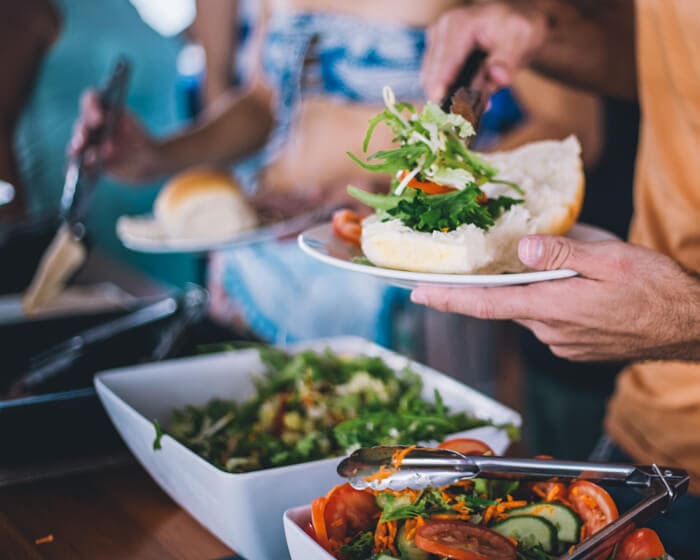
© Divers Den
We then cruised on to our next snorkeling spot of the day, where we again had ample time to roam the water.
My ex and I just snorkeled on this trip, but certified divers could go diving on their own. If you’ve never dived before, you could sign up for a diving initiation (this cost extra).
Both divers and snorkelers received a briefing before we reached our first stop. Us snorkelers were told how we could keep safe but also how we could keep the reef safe – by not touching it, for example.
We could snorkel independently, but we could also follow someone from the crew who went around the reef and pointed out things you could see. My former partner did this at some point, and he spotted a massive fish. I’d gone back to the boat by then and do have to say I now wish I’d followed him.
Overall, our Outer Barrier Reef cruise was super chill. We had time to relax on deck as we were moving between places, ample time to snorkel at both reef sites, and also plenty of time to enjoy the lunch.
By the way, the Divers Den excursion also includes pick-up from and drop-off at your accommodation in Port Douglas, which is quite handy. We used the pick-up in the morning but just walked back to the campsite so we could grab an ice cream along the way. After all, the center of Port Douglas isn’t that big.
We booked our Great Barrier Reef trip through GetYourGuide as I’m an affiliate of theirs and have booked other activities with them several times before. If you’re interested in doing the same trip, you can find all information here.
Planning your trip to the Great Barrier Reef
There is no shortage of Great Barrier Reef tours to choose from, and it really comes down to how you experience this extraordinary place. You might want to take one of the many Port Douglas snorkeling tours to swim alongside the marine life or relax at one of the sites on the Whitsundays like Green Island or Hamilton Island.
No matter how you choose to spend your time at the Great Barrier Reef, make sure you’re respectful of this UNESCO heritage site and enjoy looking but not touching!
Don’t forget travel insurance
No matter how well you plan your trip, something can always happen that’s beyond your control. A reservation can get canceled, you can get sick, or you can drop and break that new camera. When something like that happens, travel insurance has you covered.
I’ve had ongoing travel insurance ever since I started traveling to make sure I’m covered for every trip I go on, but if you travel just a few times a year, you can get insured for each trip separately as well.
Don’t have travel insurance yet? Check out SafetyWing. They offer super flexible plans that you can even sign up for while you’re already on your trip. On top of that, they were the first travel insurance to cover COVID, and when I got COVID, they reimbursed all of my expenses without making a fuss. Their customer support team is great, and I can personally recommend them.
PIN FOR LATER

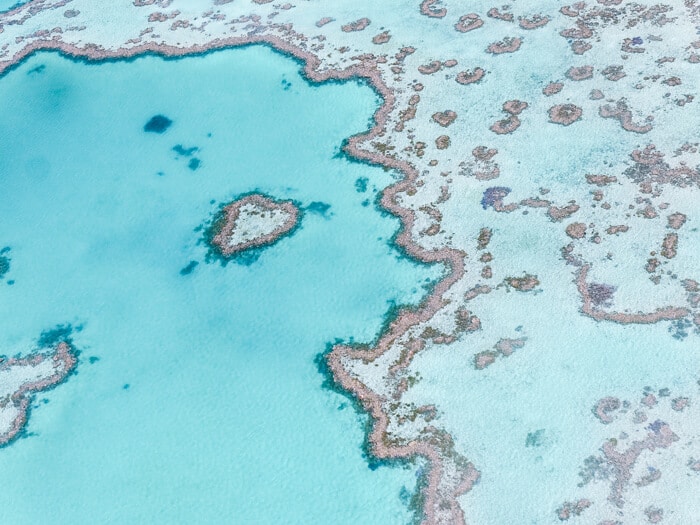
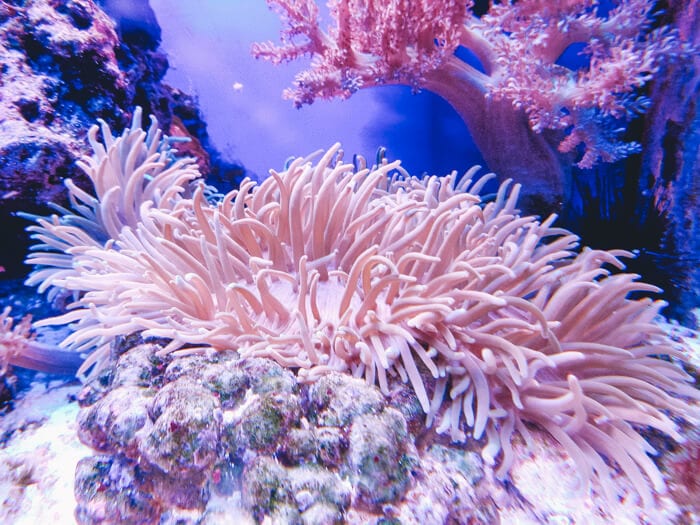
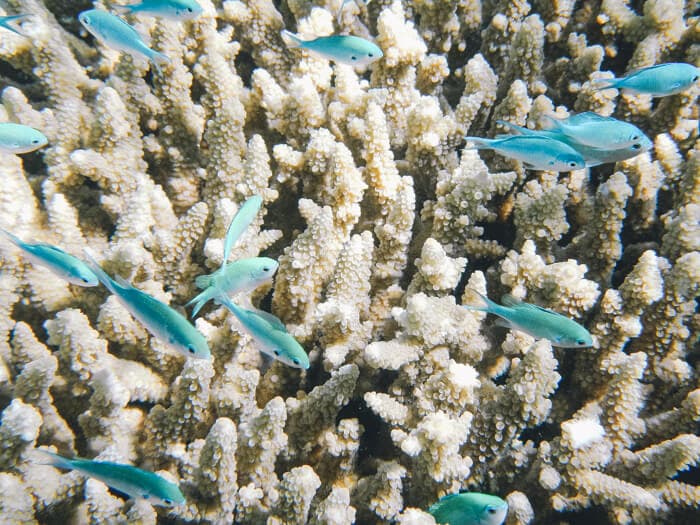
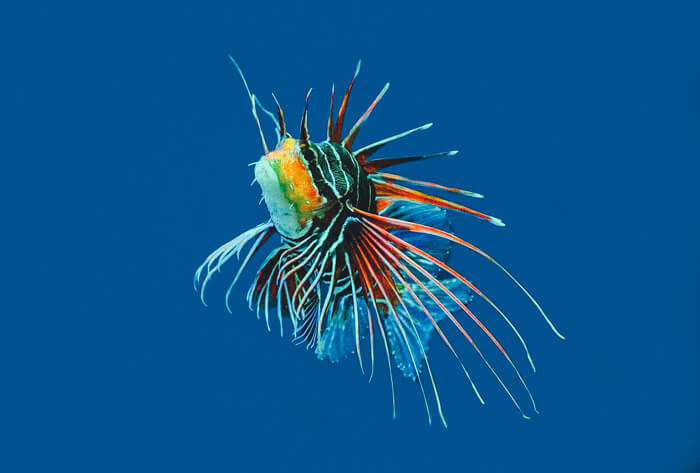
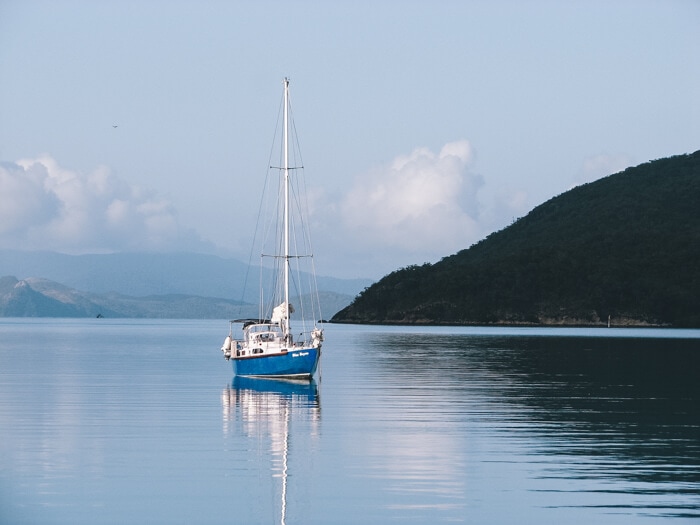
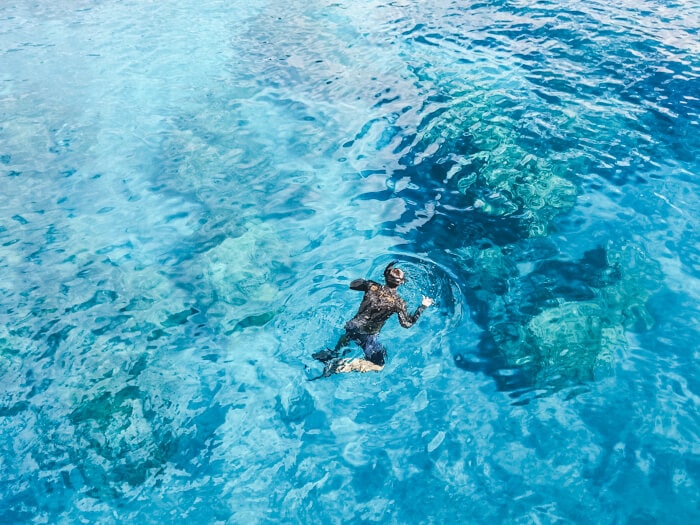
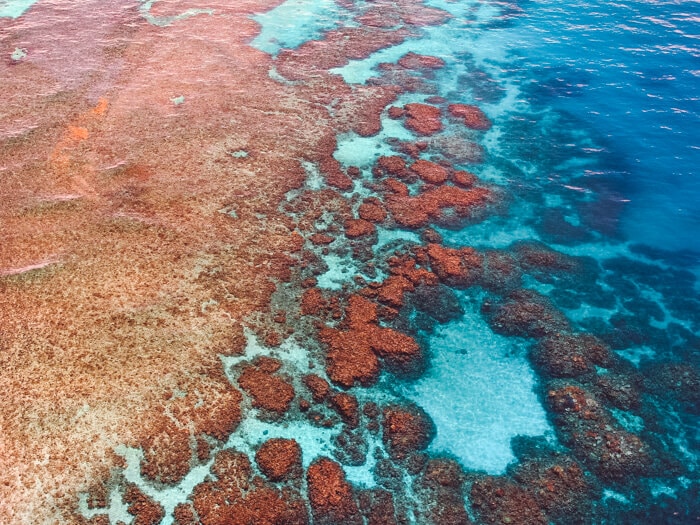
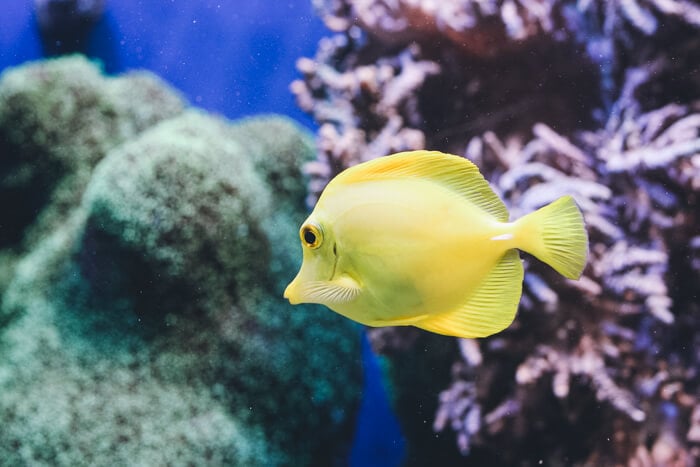
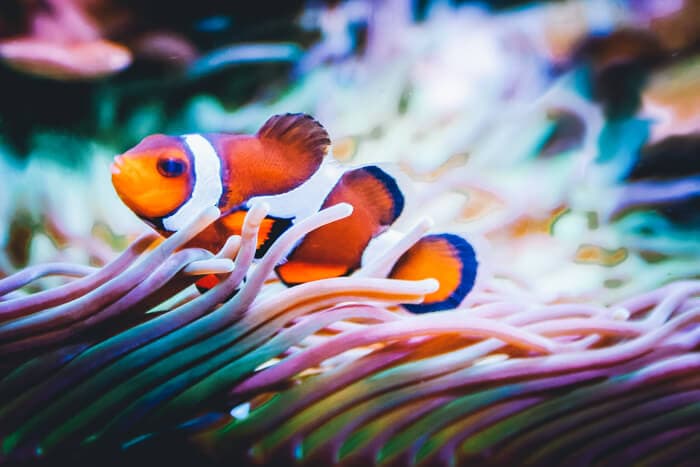
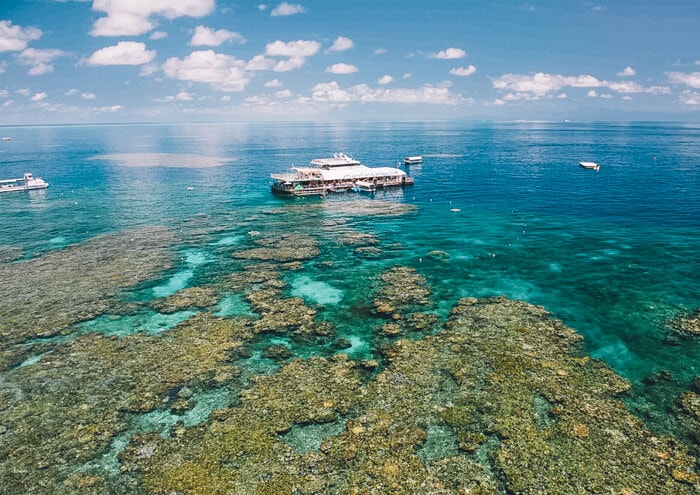
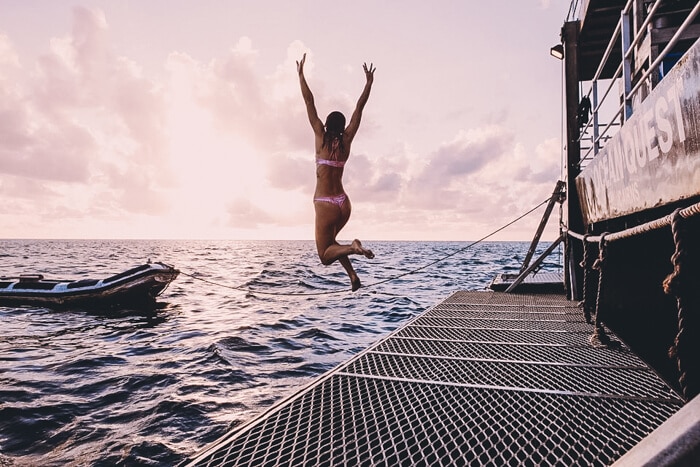
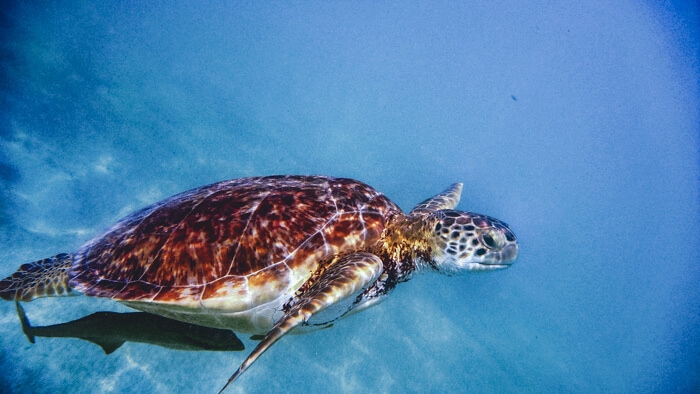
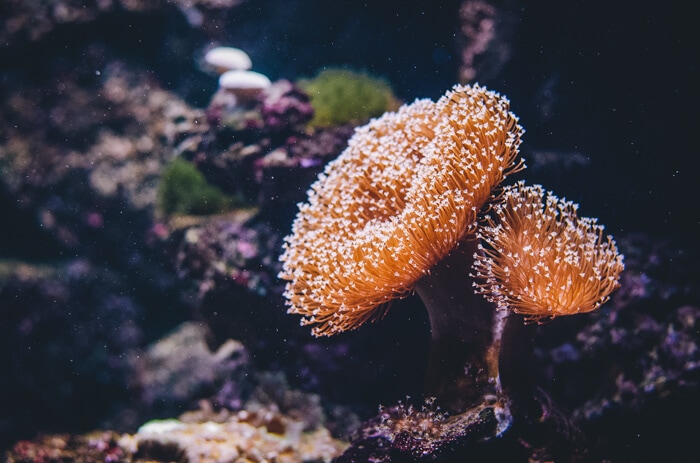
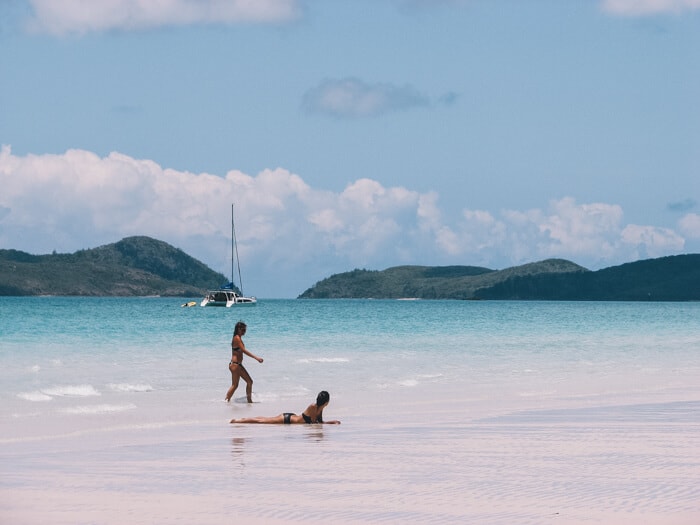
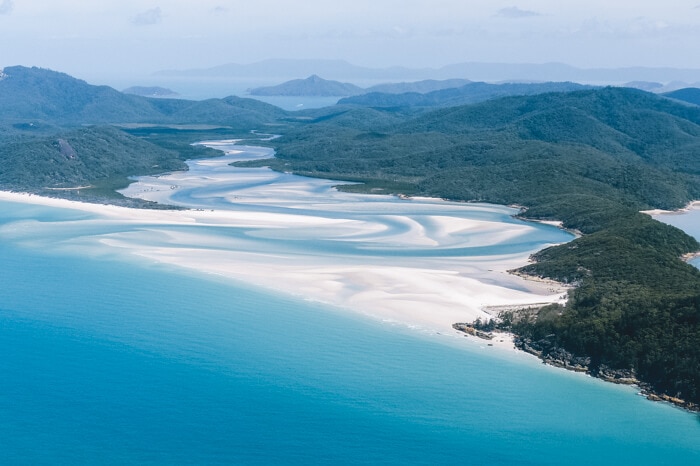
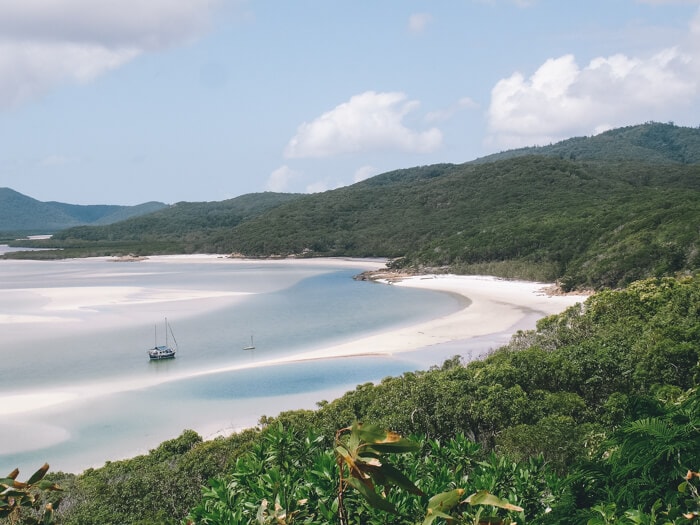
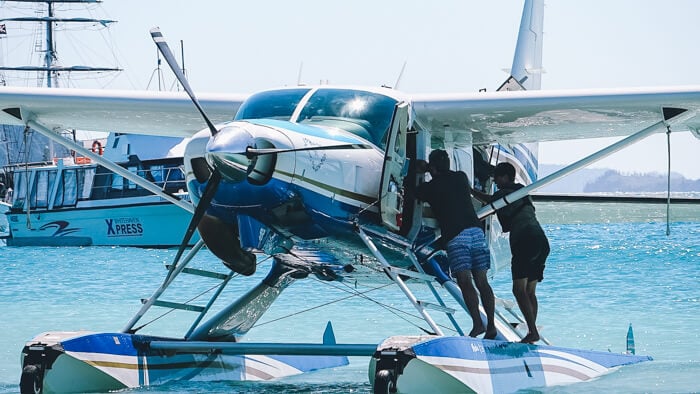
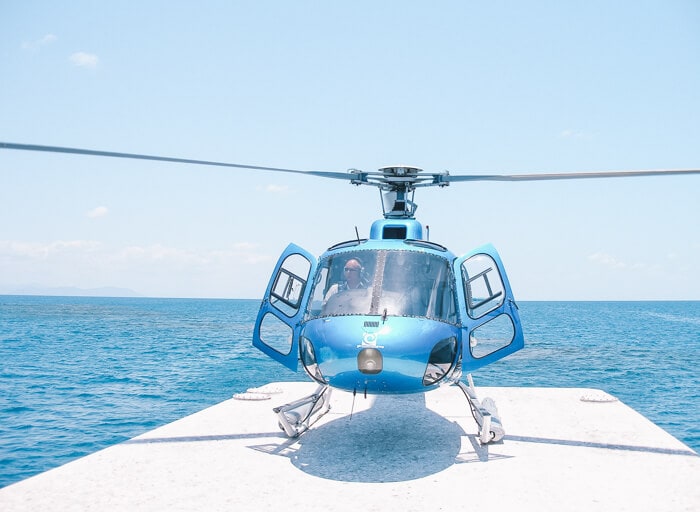
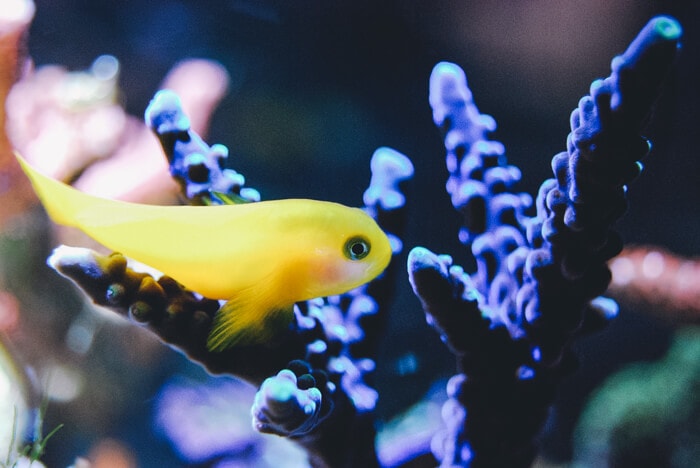
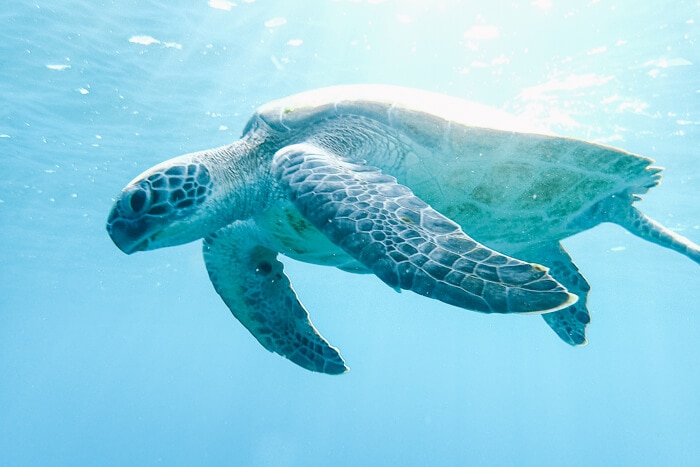
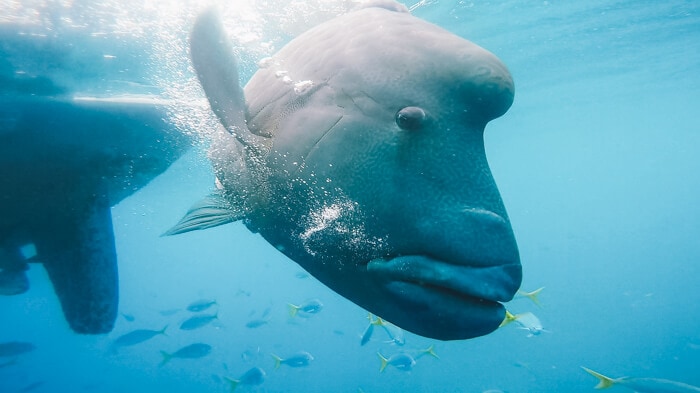
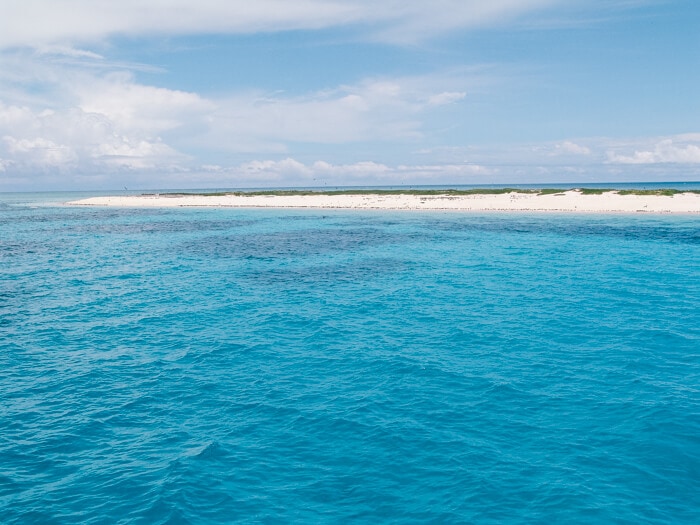
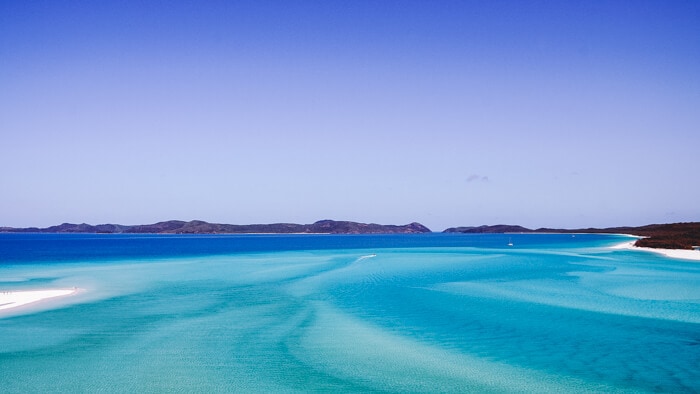
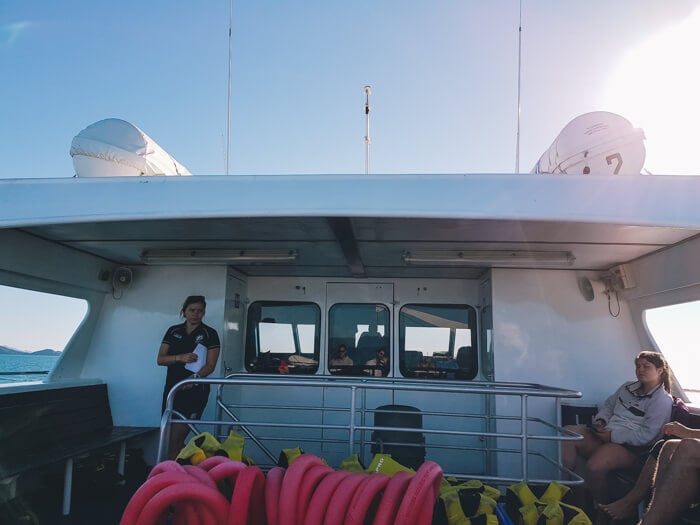
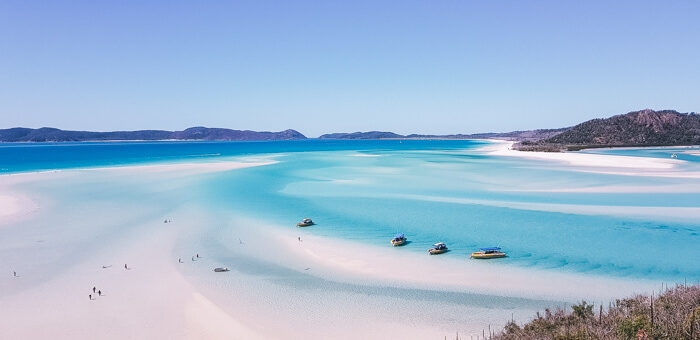
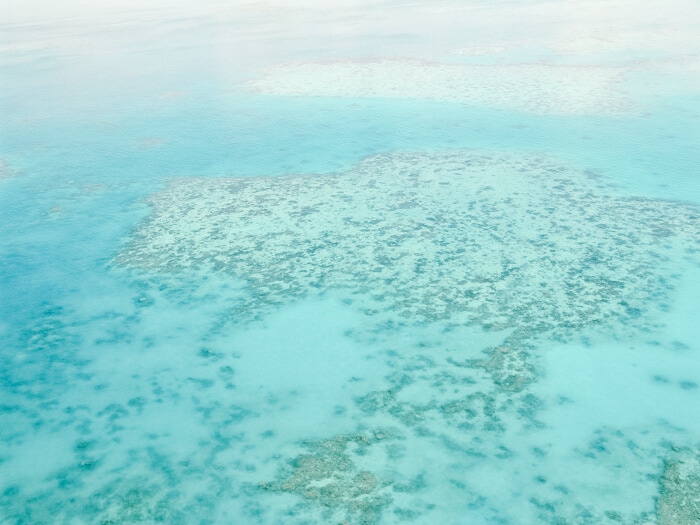
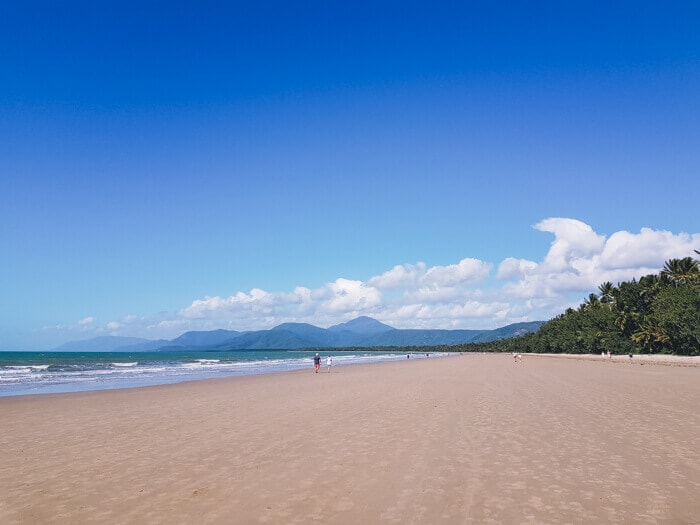
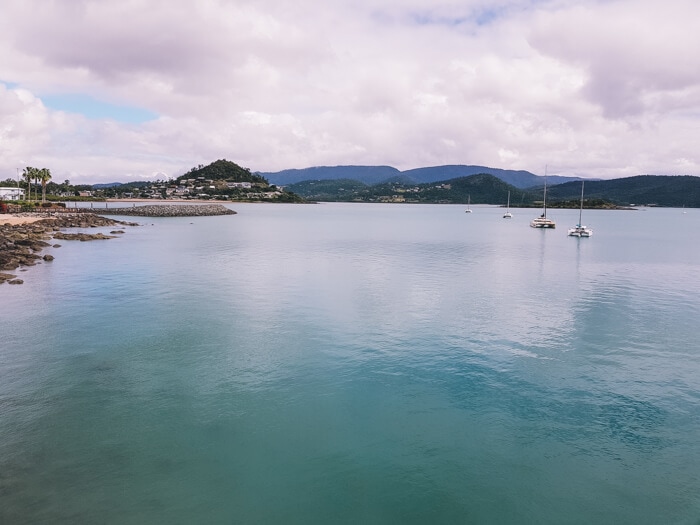
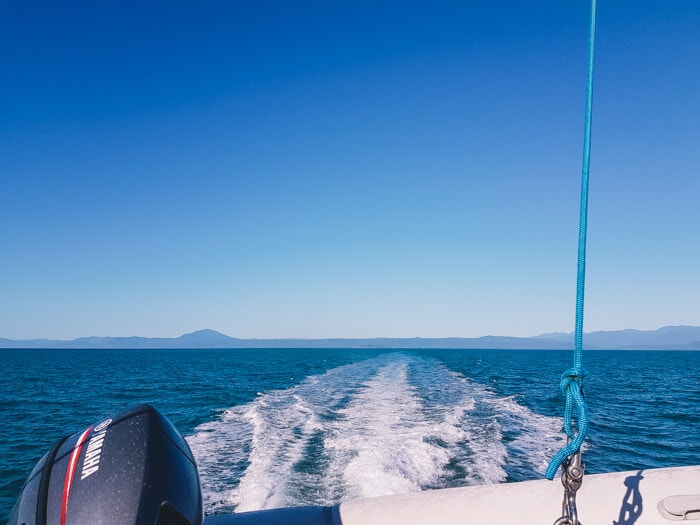
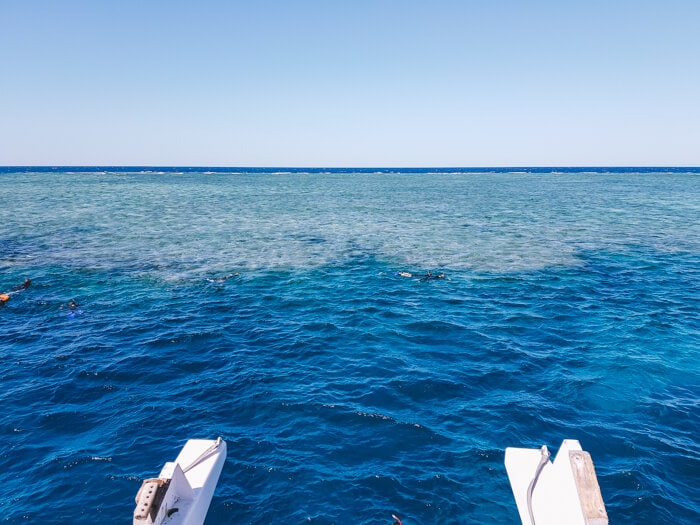
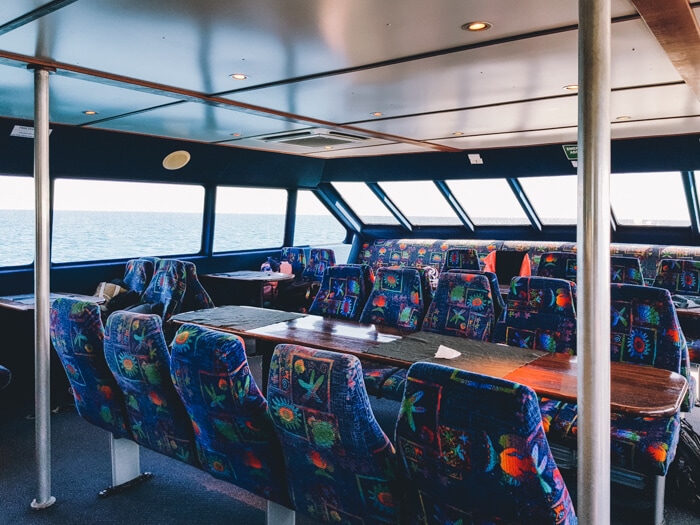
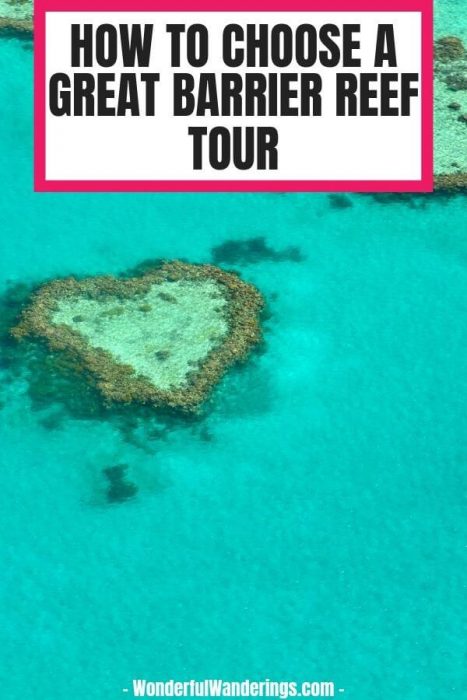
Akshay says
Hi,
I was planning to visit great barrier reef but I refused my idea due to covid situation but after reading your blog about great barrier reef I found it very interesting about there, and now I am planning to visit there near future. thank you for this post!
Sofie says
I’m happy you liked it! You can add it to your list of things to do post-COVID :)